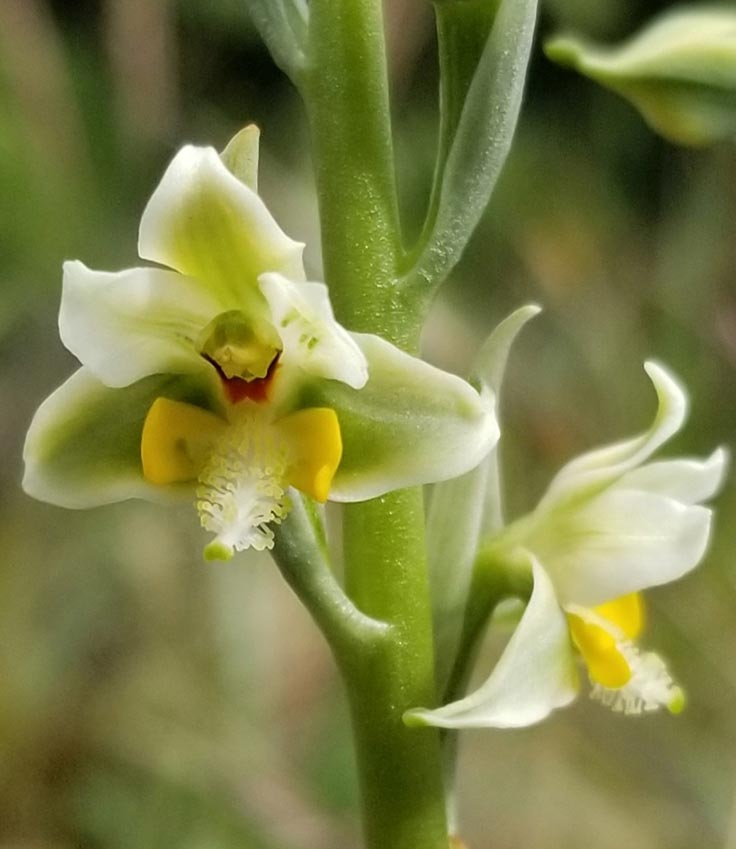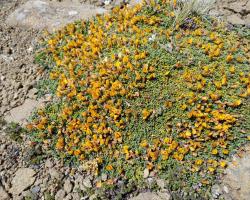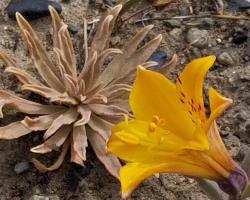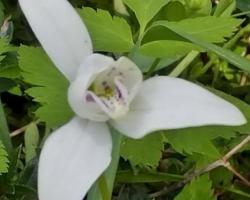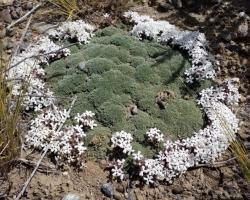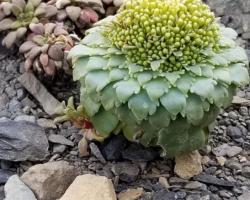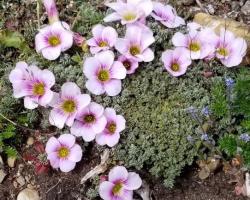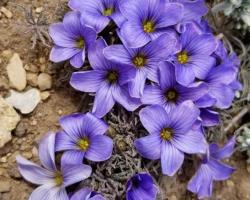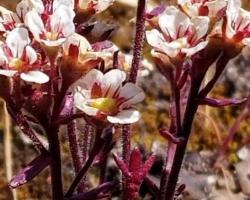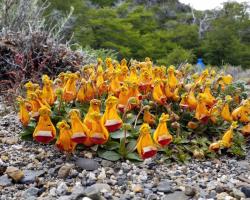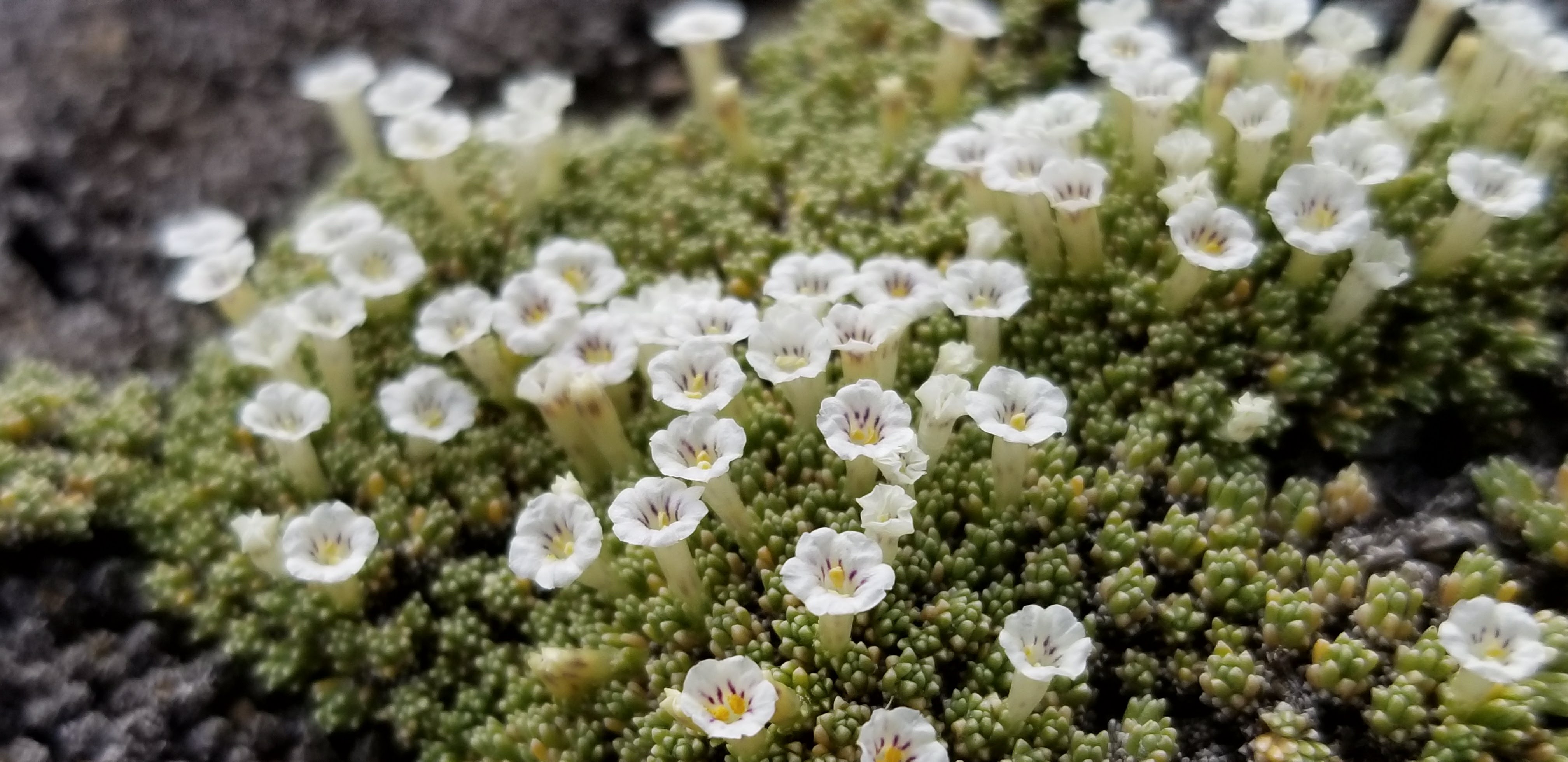
4 Night
$1,660 for Double Occupacy
$1,960 for Single Occupancy
The Southern Lakes District of Patagonia is one of the most beautiful places in Argentina. Mountains, huge lakes, glaciers, and the immensity of a landscape with few people and scattered estancias attract people from all over the world. It is also one of the harshest places to live, not only for humans but also for plants and animals. The cold weather, strong winds, snowy winters, and locally variable rainfall have resulted in a very special flora and fauna that add beauty and mystery to the region. Most of the species are very small or dwarf cushions but with big flowers or abundant small ones. When they are in bloom, the arid environment looks like paradise. Most of the region’s flowers bloom in late November and December, but can vary depending on spring weather conditions and elevation. If the species listed below are not in bloom, there will be others that we will look for and enjoy. This is a very good time for the alpine flowers and Loma del Pliegue Tumbado near El Chaltén should be full of them. If you have any questions/comments regarding Tour availability, send a message to the Tour Manager using the CONTACT in the upper right menu. Select Tours for "Category", enter your question, and click Send.
Itinerary
 Day 1 (December 10): Fly to El Calafate
Day 1 (December 10): Fly to El Calafate
The extension includes your hotel room in Buenos Aires on the preceding night plus your
transfer and flight to El Calafate. El Calafate is a small and very attractive city visited by many foreigners who are exploring southern Patagonia. We will have a general orientation to the area and should have time to look for wildflowers that grow in or near town (or enjoy some free time to relax).
Day 2 (December 11): Perito Moreno Glacier
We dedicate this day to visiting one of the World’s Natural Wonders – the Perito Moreno glacier – and nearby flora. Perito Moreno is the third largest glacier in the world (after Antarctica and Greenland). The roar of the chunks of ice falling inside the glacier or from the glacier into the turquoise waters of Lake Argentino will certainly make the day memorable. During the visit, we will walk through a beautiful forest of Nothofagus betuloides (Magellan's beech) that grows only in southern Patagonia. Under the canopy we should find Escallonia rubra, Codonorchis lessonii, Gavilea lutea, Drymis winteri, Saxifraga magellanica, and many more. Individual species may not be in bloom depending on spring weather conditions.
Day 3 (December 12): El Calafate – Balcones de El Calafate – El Chaltén
After breakfast, we drive up to a plateau named Balcones de El Calafate or Cerro Huiliche for a wonderful view and to walk and explore for flowers like Olsynium, Junellia, Alstroemeria, and Armeria. In the afternoon, we drive to El Chaltén, a small and picturesque village at the foot of the Fitz Roy and Cerro Torre massifs. On the way, we can stop to see the wildflowers that are in bloom and for a coffee break at La Leona, an old estancia. If we are lucky, we may see the showy Austrocactus bertinii in bloom and many Junellia spp.
 Day 4 (December 13): El Chaltén – Loma del Pliegue Tumbado
Day 4 (December 13): El Chaltén – Loma del Pliegue Tumbado
The hills of Loma del Pliegue Tumbado offer some of the best views in the area, including Fitz Roy, Cerro Torre, Paso del Viento, and spectacular glacial valleys. According to the group capabilities and interest, we can explore the flora on the lower terraces of the hills or try the summit, a long but gentle climb in scree. The lower part of the hills are covered by shrubland and forest. Above the timberline, the alpine flora is very rich and showy. Among the species that we may see are Oxalis enneaphylla and loricata, Moschopsis rosulata, Nassauvia magellanica, Perezia magellanica, Hamadryas sempervivoides, the interesting Bolax gummifera cushions, the hairy Senecio cryptocephalus, the fleshy Adesmia salicornioides, the beautiful Menonvillea nordenskjoeldii, and many more. It is a good time for mountain flowers! We are back in Chaltén by late afternoon.
Day 5 (December 14): El Chaltén – Río de las Vueltas – El Calafate Airport – Buenos Aires
This morning we will drive the route along Río de las Vueltas looking for species in bloom. There are several places with breathtaking views of Fitz Roy and Cerro Torre. There are several places full of Calceolaria uniflora, but the presence of flowers will depend on the springtime temperature. We may also see Viola reichei if it is still in bloom. In the afternoon, we drive to the El Calafate airport to fly back to Buenos Aires.
Other Information
Guide and Logistical Services:
Marcela Ferreyra will be the main tour guide and will be assisted by a second guide if there are more than 14 people in the group. Camino Abierto will handle tour logistics (ground transportation, lodging, food, etc.). If you would like to spend additional time in Argentina either before or after the NARGS tour or extension, Camino Abierto can provide assistance.
Lodging:
All hotels have been selected by Marcela and Camino Abierto based on past experience. They are generally within walking distance of town centers, restaurants, etc. Example hotels are Hostería Las Marianas in Bariloche, Hostería Plaza Mayor in San Martín de los Andes, Hostería La Balconada in Villa Pehuenia, Hotel Nevado in Caviahue, Hostería Picun Ruca in Chos Malal, Hostería Puerto San Julián in El Calafate, and Hostería Pudu Lodge in Chaltén. Double beds in Argentina are mostly queen size.
Meals:
Bariloche is very cosmopolitan but most of the towns that we will be staying in have limited dining options and locals speak little if any English. Breakfast will be provided at the hotel and generally consists of eggs, ham, cereals, cheese, toasted bread, jam, local pastries, fruit juice, milk, tea, and coffee. For days we are in the field, we will provide a box lunch and snacks using locally available foods. We will also provide water during all meals and field activities. Dinners are the main meal of the day for most Patagonians and typically consist of lamb, pasta, casseroles, soup, and salad. To accommodate personal dietary preferences, we will give each participant a list of dinner options for review and selection prior to arrival. Beverages other than water can be purchased by participants based on local availability. The main tour includes 11 breakfasts and lunches (every day except Day 1) and 11 dinners (all except Day 12). The extension includes 5 breakfasts (every day), 4 lunches (every day except Day 1), and 4 dinners (every day except Day 5).
Ground Transportation:
Air-conditioned vans or minibuses driven by professional drivers will be used during the tour and extension.
Hikes:
The goal of the tour is to botanize and is not a test of endurance or climbing skills. Tour participants should be in reasonable shape and able to traverse uneven terrain. During the main tour, we will generally be at elevations of 1,000 - 4,000 fasl (some hikes may go up to 6,500 fasl). During the extension, we will generally be at elevations of 600 - 3,500 fasl (some hikes may go up to 5,000 fasl.
Weather:
We will be visiting Patagonia during the dry season, but high winds (especially in southern Patagonia) and rain are always a possibility. Ambient temperatures will generally be between 40° and 70° F in northern Patagonia and between 40° and 55° F in southern Patagonia.
Gear:
Be prepared for variable conditions. Bring clothes that can be layered, good rain and wind clothing, and a day pack, as well as mountain shoes, a sunhat that ties, sunscreen and bug repellant.
Books:
The best reference is Flowers of the Patagonian Mountains by Martin Sheader available through the Alpine Garden Society and other places. Its companion volume Patagonian Mountain Flower Holidays by Hilary Little is also great for anyone wanting to explore this plantsman’s paradise.
Group Size and Price:
Both tours have been designed to accommodate up to 24 people. Pricing is based on a minimum of 15 people on the main tour and 10 people on the extension. If these minimums are not met, NARGS may need to cancel the tour or increase the price.
Supplemental Information Related to International and Domestic Flights:
It is expected that tour participants will be flying into Argentina from various locations and that some may want to spend additional time in South America as part of their trip. To meet everyone’s needs, tour participants are responsible for booking their own international flights into and out of Buenos Aires. Domestic flights to or from Bariloche, Neuquén, and El Calafate will be coordinated by Camino Abierto. However, it is not currently possible to confirm flight schedules or prices for travel in November and December 2022. A supplemental cost will be provided to tour participants in early 2022 for the flights (in November 2021, the cost for coach class tickets are approximately $350 for the main tour and $300 for the extension).
What is not included in the tour and extension prices:
- International flights
- Hotel and other expenses in Buenos Aires before and after the tour and extension except as noted above
- Beverages except those listed above during meals and field activities
- Travel and medical insurance
- Tips for guides and drivers
- Services not detailed in the program
QUESTIONS?
If you have any questions/comments regarding Tour availability send a message to the Tour Manager using this Contact link, or the one in the upper right menu, and select Tours for Category.

